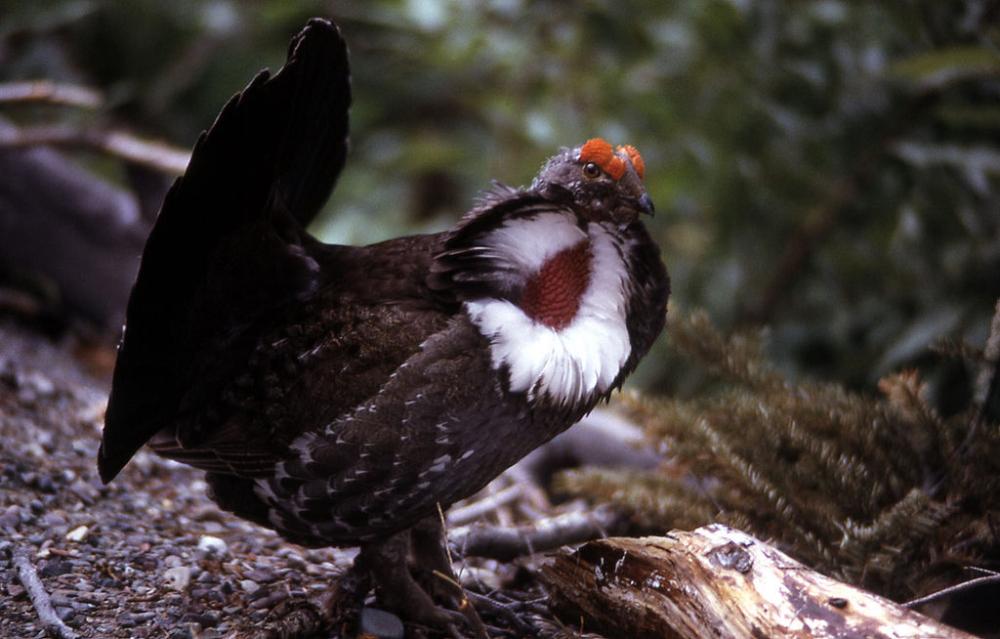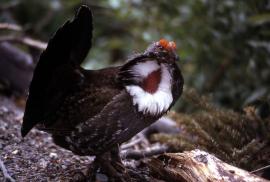Guide to Boreal Birds
Overview
The deep booming hoots of a courting male Dusky Grouse are audible for many yards but because they are so low in pitch, the bird itself can be extremely difficult to find. It is worth the effort, however, because as he hoots, the male fans his tail over his back, spreads the feathers on his neck to reveal the patch of brightly colored skin, and erects the combs over the eyes, producing a striking display. In winter this grouse feeds exclusively on conifer needles; its summer diet consists of insects, seeds, and berries.
Description
15 1/2 -21" (39-53 cm). A large grouse. Male dusky gray or bluish gray, with orange-yellow or red comb over eye, patch of yellow skin on neck surrounded by rosette of white feathers, some mottling on wings, and blackish tail with pale gray terminal band. Birds in Rockies lack terminal tail band and have red skin in center of rosette on neck. Females and immatures mottled brown with dark tail.
Voice
Male gives a series of deep hoots, whoop, whoop, whoop, whoop, whoop, increasing in tempo and volume.
Nesting
5-10 cream-colored eggs, lightly spotted with brown, in a scrape lined with pine needles and grass, usually sheltered by a stump or rock.
Habitat
Burned areas, brush in coastal rain forest; montane forests, slashes, and subalpine forest clearings.
Range/Migration
Resident from southeastern Alaska and Northwest Territories south to California, Arizona, Colorado, and New Mexico.



